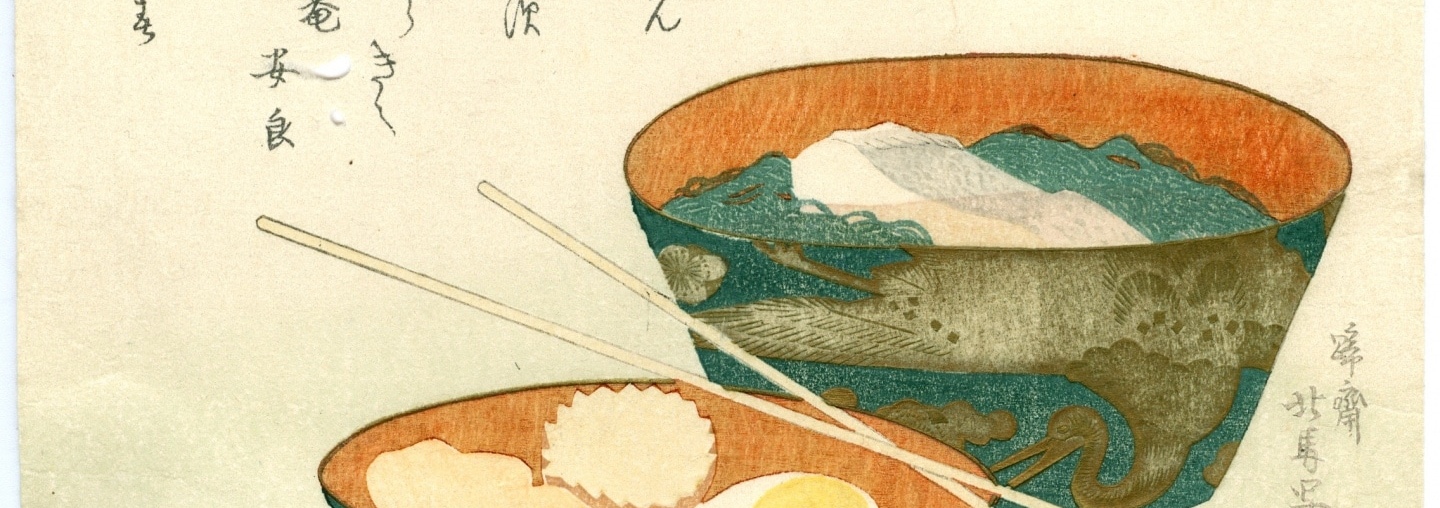
Frank Lloyd Wright and the Japanese Print
Michael Desmond | Aug 15, 2018
Michael Desmond, a Frank Lloyd Wright scholar and member of the Frank Lloyd Wright Foundation’s Board of Trustees, highlights the influence of Japanese art on Wright’s understanding of the world around him by pairing the art with Wright’s writing on the topic.
Our varied and growing understandings of Frank Lloyd Wright are filled with inspiration drawn from his observations of the natural world. While these came from many sources, the Ukiyo‑e woodblock print tradition of Japan offered him a model for insights he treasured deeply. He was an admirer, an early and significant collector, and an active dealer across his career—selling hundreds to the Metropolitan Museum of Art in New York, for example. Among his most lucid theoretical writings is The Japanese Print: An Interpretation (1912) in which he describes ways the master artists used their observations of the intertwining forms of nature and culture to create objects of great beauty. Wright was inspired by the simplicity and directness of so many of these works, by their abstractions of natural form and structure, by their “elimination of the insignificant.”
To highlight the influence of this art on Wright’s understanding of the world around him, I have paired selected passages from The Japanese Print with examples from his own art collection exploring the insights revealed in his writings.
This article originally appeared in, “Section,” the Summer 2017 issue of the Frank Lloyd Wright Quarterly.
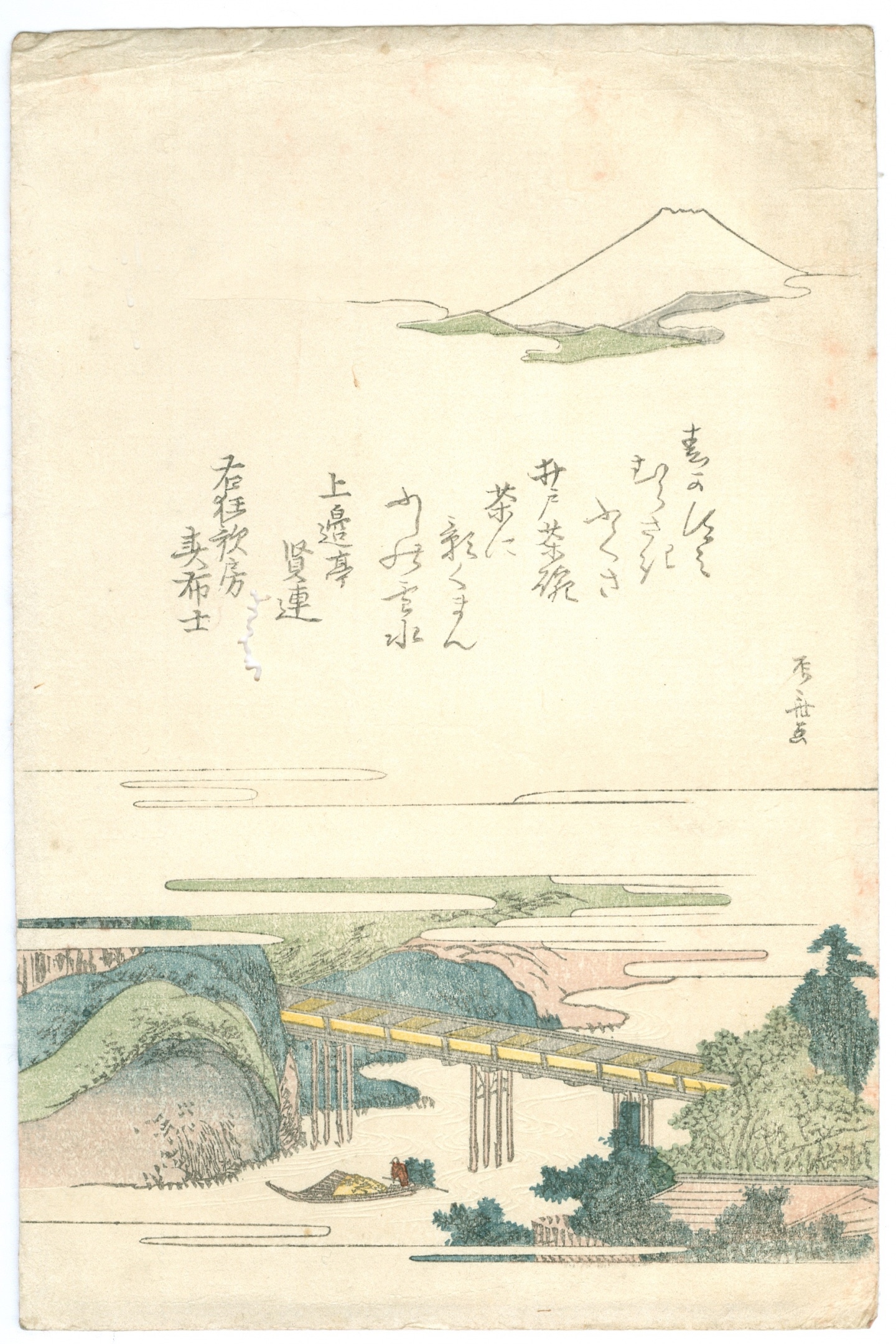
ORDER: “A bridge over a river with Mount Fuji in the background” by Shinsai.
ORDER
A flower is beautiful, we say—but why? Because in its geometry and in its sensuous qualities it is an embodiment and significant expression of that precious something in ourselves which we instinctively know to be Life, “An eye looking out upon us from the great inner sea of beauty,” a proof of the eternal harmony in the nature of a universe which is too vast and intimate and real for the mere intellect to seize. We intuitively grasp something of it when we affirm that “the flower is beautiful.” And when we say, “It is beautiful,” mean that the quality in us which is our very life recognizes itself there or at least what is its very own: So there vibrates in us a sympathetic chord struck mystically by the flower. (The Japanese Print: An Interpretation, p. 4)
STRUCTURE
The word structure is here used to designate an organic form, an organization in a very definite manner of parts or elements into a larger unity—a vital whole. So, in design, that element which we call its structure is primarily the pure form, as arranged or fashioned and grouped to “build” the Idea; an idea which must always persuade us of its reasonableness. Geometry is the grammar, so to speak, of the form. It is its architectural principle. But there is a psychic correlation between the geometry of form and our associated ideas which constitutes its symbolic value. There resides always a certain “spell‑power” in any geometric form which seems more or less a mystery, and is, as we say, the soul of the thing. (p. 6)
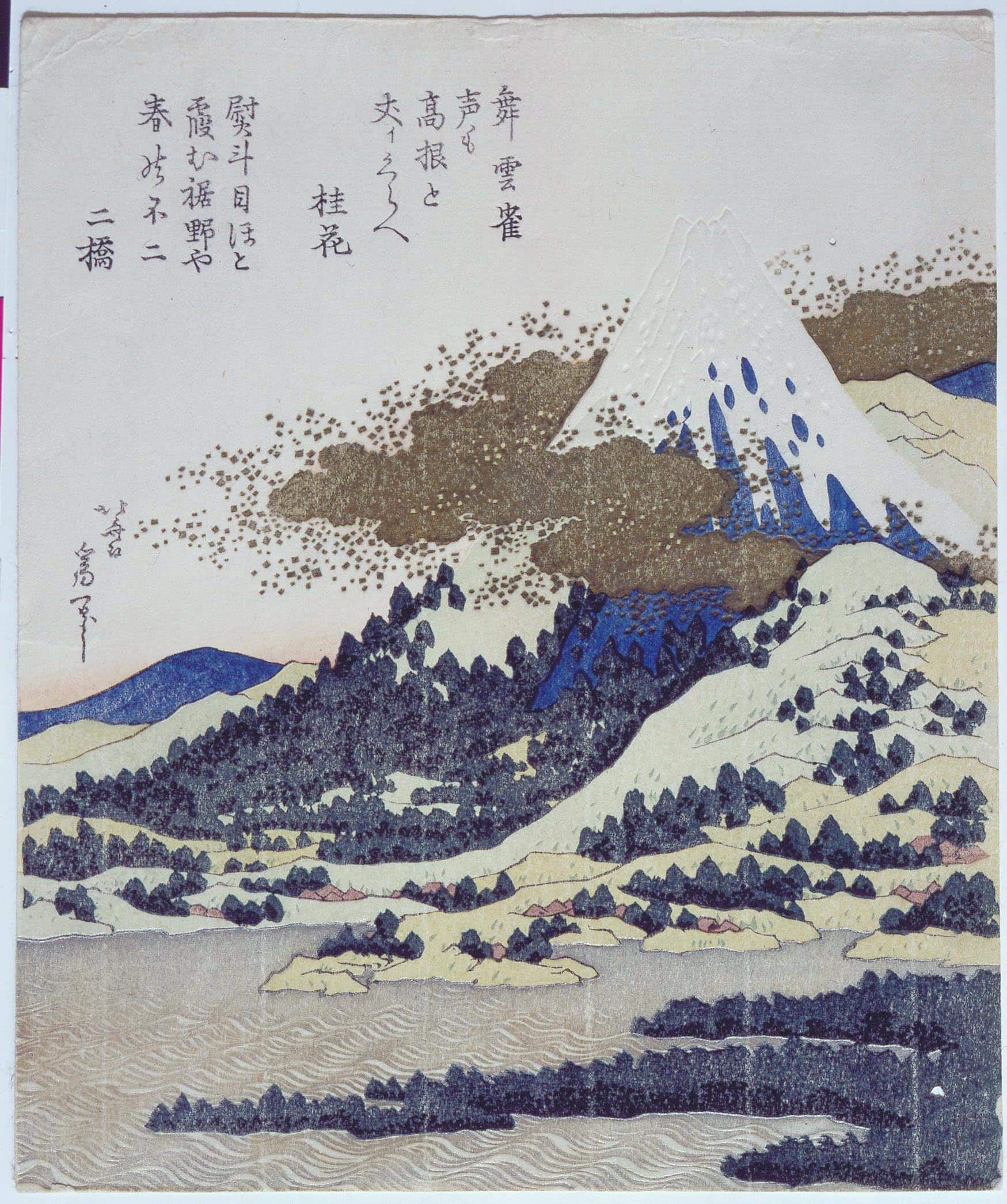
STRUCTURE: “A view of Mount Fuji” by Hokusai.
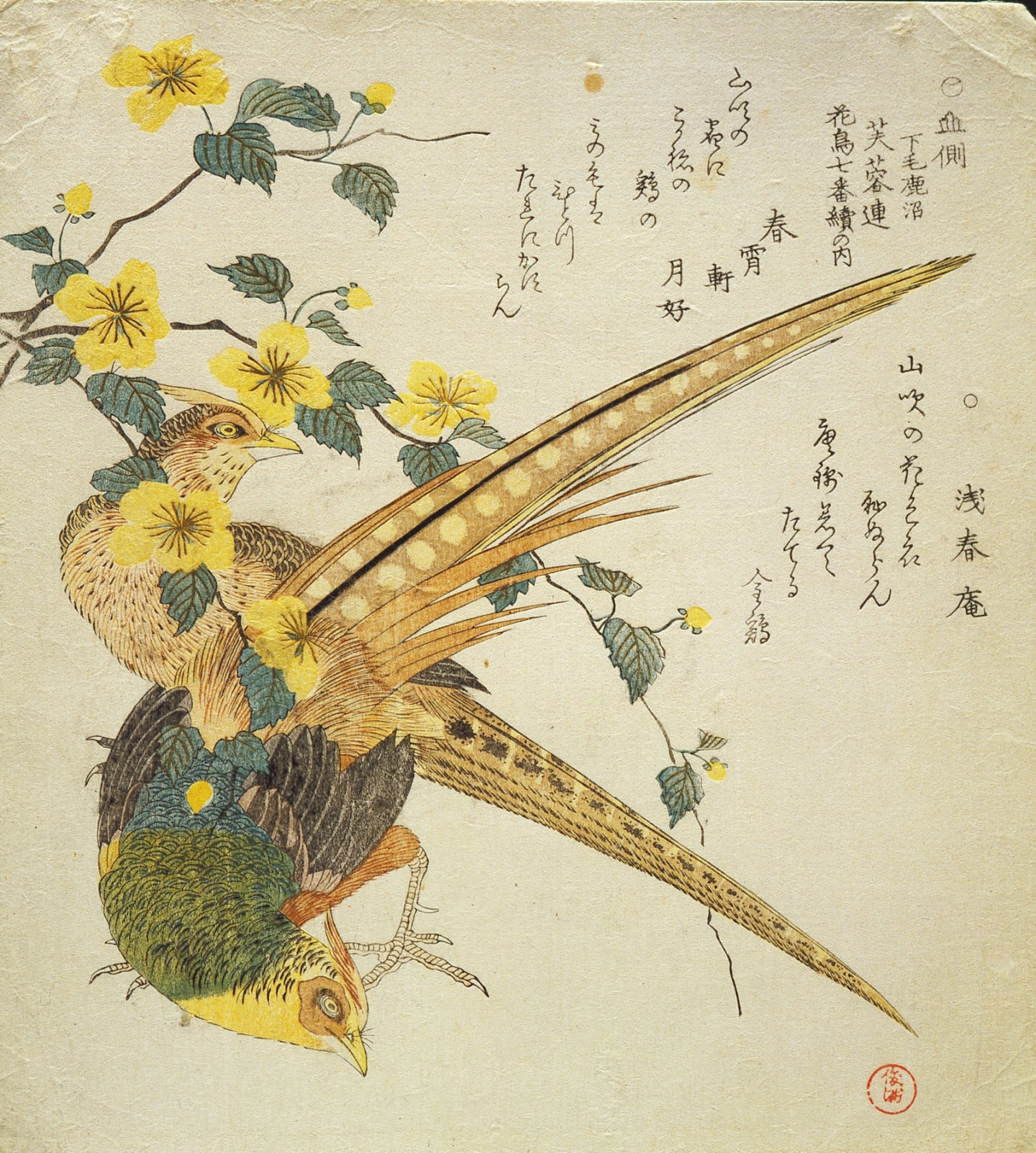
SIMPLIFICATION: “A pair of Chinese pheasants” by Kubo Shumman.
SIMPLIFICATION
This process of elimination of the insignificant we find to be their first and most important consideration as artists, after the fundamental mathematics of structure. A Japanese may tell you what he knows in a single drawing, but never will he attempt to tell you all he knows. He is quite content to lay stress upon a simple element, insignificant enough perhaps before he has handled it; when, (as we find again and again in the works of Karin and his school) the very slight means employed touches the soul of the subject so surely and intimately that while less would have failed of the intended effect, more would have been profane. This process of simplification is in a sense a dramatization of the subject, just as all Japanese ceremonials are the common offices and functions of their daily life delicately dramatized in little. (p. 13 – 14)
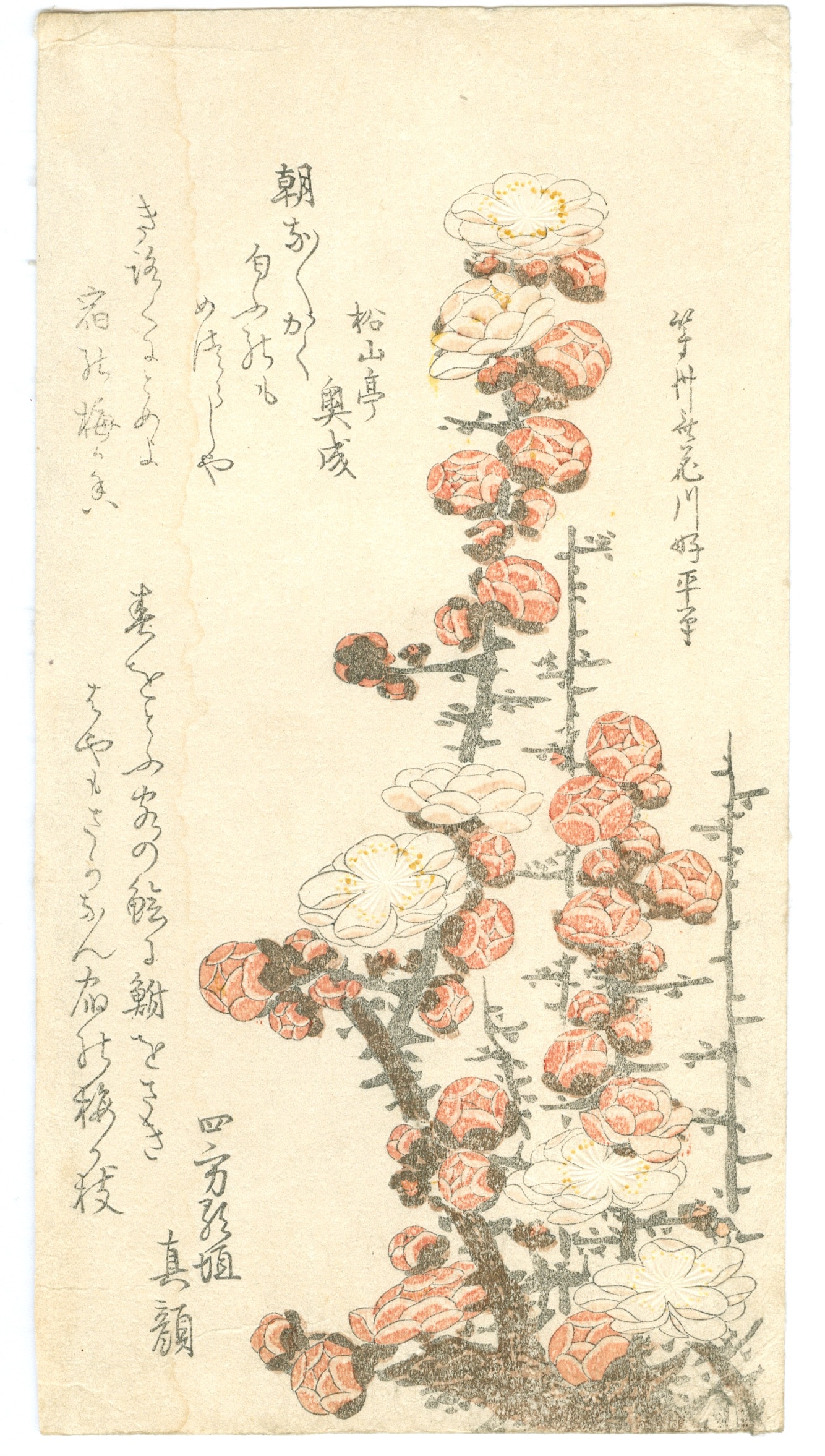
NATURAL SIMPLICITY: “A branch of plum blossoms” by Toshu.
NATURAL SIMPLICITY
It has spread abroad the gospel of simplification as no other modern agency has preached it, and has taught that organic integrity within the work of art itself is fundamentally the law of beauty. Without it work may be a meretricious mask, with literal suggestion or sensual effect, but it cannot become true art. That quality in the work which is “real” escapes and the would‑be artist remains where he belongs—outside the sanctuary. It has shown us that no more than a sand bank and the sea, or a foreground, a telegraph pole and a weed in proper arrangement may yield a higher message of love and beauty, a surer proof of life than the sentimentality of Raphael or Angelo’s magnificent pictorial sculpture. Chaste and delicate, it has taught that healthy and wholesome sentiment has nothing in common with sentimentality, or sensuous feeling with banal sensuality; that integrity of means to ends is in art indispensable to the poetry of so‑called inspired results; and that the inspiring life of the work of art consists and inheres, has its very breath and creative being within the work itself; an integrity, in fine, as organic as anything that grows in the great out‑of‑doors. (p. 24)

SCIENTIFIC ELEMENTS: “A lacquer bowl and cover with noodles and other ingredients” by Hokuba.
SCIENTIFIC ELEMENTS
In the slight wash drawings of the Kakemono, we find a more sheer and delicate manifestation of reserve than in this more popular, and in a sense therefore, more vulgar form of expression. Latent always, however, in the slightest and seemingly most informal designs, through the least of these works as through the greatest, the geometric structure effects a potent spell. No composition can we find not affected by it and that does not bear this psychic spell meanwhile, as if unconscious of its precious burden, its efficient causes enwoven and subtly hid between the lines of its geometric forms. As the poor saint was believed to bear his mystic nimbus, so each humble masterpiece asserts its magic of invisible perfection. Yet, this mystery is reduced by Japanese masters to its scientific elements, as exemplified by certain pages of textbooks by Hokusai, wherein the structural diagrams are clearly given, and transformation to material objects shown progressively step by step. (p. 15 – 16)
Michael Desmond is a licensed architect, holds a Ph.D. in the History, Theory & Criticism of Architecture from MIT, and a Master of Architecture in Urban Design from Harvard University. Having taught at Harvard, the Boston Architectural Center, the Rhode Island School of Design, and the University of Massachusetts before arriving in Baton Rouge, Desmond now teaches architectural history and urban design in the Louisiana State University School of Architecture. Long‑term research interests include study of the form and processes of urban growth in the United States; relationships and dependencies between architectural forms and urban planning ideas; and the ways in which buildings and the patterns of towns are expressive of underlying cultural ideals. Desmond, a Frank Lloyd Wright scholar, serves on the Frank Lloyd Wright Foundation’s Board of Trustees.



